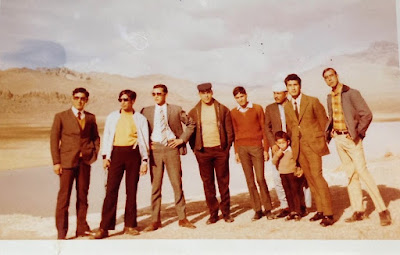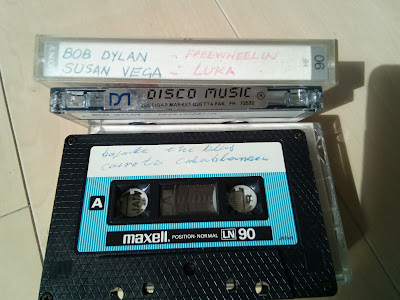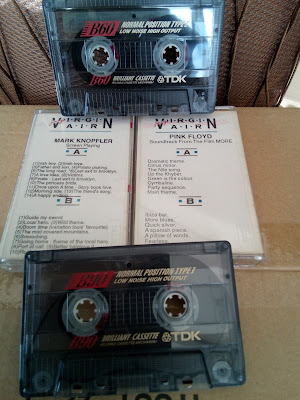 |
| Sahebi Store, Toghi Road, Quetta ( late 1960s or early 1970s) |
Toghi Road, Quetta (some snapshots only)
"There is more required nowadays to make a single wise man than formerly to make seven sages, and more is needed nowadays to deal with a single person than required with a whole people in former times."
Baltasar Gracian
"If you don't know where you are, you don't know who you are."
Wendell Berry
---------------------------------------------------------------------------------------------------------------------
I was not happy when they changed its name. In fact, I was angry.
Why do they do such things? They have even changed the names of buildings,
hospitals, museums, events, of schools, colleges, universities and of entire
towns and cities, for example, from Lyallpur to Faisalabad, from Fort Sandeman
to Zhob, Hindu Bagh to Muslim Bagh, Temple Dera to Dera Murad Jamali, from Montgomery to Sahiwal and so on.
What was wrong with all the former names? What exactly do they want to
prove: to remove all signs of our ugly colonial past? Or to tell the world that we are no longer a
subjugated people, a colonized people, and that we are now in control of our
destiny, free to write our own history the way we want to? These are noble
intentions indeed, but after 75 sordid years of so-called “independence” or azadi,
all of these remain vacuous, ridiculous and outright hypocritical gestures in
the light of the ugly realities of the country that is Pakistan, and especially
of the disgustingly subservient attitude of its criminal ruling classes with their
bankrupt culture and decadent lifestyles. Real freedom does not start with, or
reside in, symbolic gestures only like changing event, street or city names; it
starts, first and foremost, with breaking the shackles of slavery within, with freeing
our minds and hearts of the old bondages first. Decolonization,
if it means anything, is “decolonization of the mind” above everything else,
as the great Ngugi Wa Thiongo and other post-colonial thinkers and activists articulated the
notion in the second half of the twentieth century, a period of rapid decolonization
in most of Africa and Asia.
As I write this piece, the so-called leaders of the country, that notoriously ill-bred cabal of shameless thugs ---civilian as well as
the booted, khaki bloodsuckers---- are roaming the globe in planeloads from the
Arab Middle East to EU countries and to North America, begging bowls in hand and on their knees pleading in front of everybody and anybody who they think can
throw them a penny. In huge numbers, they travel first-class, are chauffeured
around in limousines in world capitals---Geneva, Brussels, New York, London,
Paris---- and stay at plush hotels where, like a pack of voracious wild boars,
they greedily devour the best and most expensive food and alcohol. The tab for
these perverse binges is, of course, picked up by the impoverished Pakistani people---the perennially
brutalized, eternally damned masses called the bechari awam. Expert after expert is warning us that the country is on the verge of bankruptcy, teetering on the edge of total collapse. The entire
international community is gossiping in disgust, both in private and publicly,
about this obscenely brazen-faced vulgarity of these clowns, the rotten-to-the-core ruling “elites”.
I digressed. As I was saying, I was not happy at all when they changed the name of the iconic Toghi Road in Quetta to Sardar Essa Khan Road. Why change something so simple—just two syllables, so simple that it rolls off the tongue so effortlessly, and is even musical to say and listen to----to something so ridiculously long, so stupidly pompous ? I have nothing against this sardar sahib, but why do they honor these people at the cost of someone/something else that is immensely more meaningful and important, at the cost of so much history, tradition, of memories, stories, myths and legends? Toghi Road was, is and will always be so many things to so many people, to thousands if not millions of people: people who were born and who died on Toghi Road; people who were raised and went to school on Toghi Road; people who got married and had children, had grandchildren on Toghi Road; people who made and those who lost their fortunes on Toghi Road; and, people who have never visited but who have heard so much about Toghi Road. Do you see what I mean? What exactly does Sardar Essa Khan Road mean to all these people, if anything at all?
 |
| Gulshan Karahi, Toghi Road, Quetta |
One can say that Toghi Road starts at one end with that old medical store, itself of iconic status, Barkat Medical Store and extends all the way to one of the equally old and iconic educational institutions of the city, St. Teresa’s Middle School, going in the direction of Koh i Murdar. The school is no more but Barkat Medical is still very much there. Next to the medical store was another old landmark of Quetta: Sahebi Store. The grocery (provision, as they say in Quetta) store, one of the biggest, if not the biggest (there was also Quddusi Store, perhaps its only rival) closed doors some years ago, in the midst of the state-sponsored, state choreographed murderous pogroms: the booted, wardigardi genocidal purges that have plagued the internal colony of the violently rogue Pindi-Islamabad-Lahore axis of evil. I am talking about that unfortunate, plundered colony euphemistically referred to as “the province of Balochistan" in all official propaganda. The tyrannized people of the land have suffered tragedy after tragedy, on all levels, because of these directly or indirectly state orchestrated "strategic" ethno-sectarian bloodbaths started in the 1970s but with special, systemic, “targeted” violence meted out to one community in particular, the Hazaras, in the capital city of Quetta. (A member of the Sahebi family, the owner of another famous store, Ahmed Store on Prince Road, was brutally gunned down in broad daylight.)
 |
| Barkat Medical Store, Toghi Road Quetta |
As we move uptown, or up the road, there are the many old businesses of Quetta City that I still remember. I recall some: Nigar Photographers, Dr. Hashim Khan’s Clinic, Delight Cinema, Mehmood Stationary Mart, Gulshan Karahi Walla. Delight Cinema is also gone and on its grounds now sits a glitzy glass and concrete shopping mall with the same name, Delight Mall. Yet another ugly consumerist monstrosity that now stands tall mocking the traditional sense of ecological scale and moral sanity. These casino-capitalist cathedrals of greed that are now popping up everywhere in Quetta not only radically clash with the traditional architectural aesthetics of the place---they always look so out of place, so totally disruptive--- but, sadly, they openly and brazenly celebrate the demise of the old virtues of simplicity, contentment, empathy and humility. Gulshan Karahi is still there I think. Mehmood Stationery I am not sure about. Many years ago when I was there, it had transformed itself into a printing press. Across from the cinema, in the corner, was a cigarette and paan kokha, a stall or kiosk. That’s where I usually bought my father’s Saleem beedi (and S, in later years) and Dunhill cigarettes. Next to the cinema was a sweets shop, a mithai walla or a halwai, where they used to sell those bright orange sticky jalebi, a favorite evening snack for many, especially for athletes who would usually eat them soaked in bowls of fresh, hot milk. I never liked them. The halwai place, I believe, was owned by a Mr. Jadoon, whose son Amjad was our senior at college.
Speaking of halwais, there was another one further up the
road, just before we reach the side street which leads to the Quaid e Abad Police
Station. I don’t remember what it was called but one thing I very clearly
remember: the owner. He was a balding tall man, slender and dark
complexioned. What I remember most clearly about him, however, was his eyes. A
reticent being that preferred the use of gestures and facial expressions for communication than words, he had the softest and the kindest eyes I have ever
seen. I think initially he started that business as a halwai, selling the traditional
mithai (sweets) like jalebi, laddoo, barfi, gulab jaman and bondhi etc., but
the place soon became popular for its samosa and pakora and mithai became the
minor product, eventually disappearing from the oily wooden shelves at the back. The
man who I believe was either a Saraiki speaking or a Punjabi originally from South
Punjab usually sat erect on a low stool with the huge, coal black karahi
containing the hot, simmering oil in front of him into which he would gently
slip the diced onions, green chilies and sliced potatoes covered in thick pakora
batter and the aloo-filled samosa. To me, to the eyes of a child, the triangular dipping and floating samosa in that
huge, wide oil filled pot always resembled little boats in a lake or an ocean at night.
To the eventual query of a customer, “How much?”, the man would either use his
fingers to answer, or just whisper, “Paanch rupay” (five rupees). And as soon
as he was done with the money business—receiving money and returning the change---he
would go back into that erect position (like someone in the midst of Zen meditation) and start the gentle poking and flipping
process again with his long strainer type flat ladle, his whole attention fixed
on the little samosa boats and pakora dumplings in that dark ocean of oil in the
huge karahi. Those eyes, those pacific eyes with tranquilizing, nay, healing
powers.
On the corner of that side street, there used to be a small bakery. If I am not wrong, it was a sub-branch of the famous Imperial Bakery of Quetta. The bakery, just like its parent store, sold the best pound cake, rusk and the two kinds of plain biscuit: sweet and namkeen, or salted biscuits. I especially liked the namkeen variety which in appearance was only slightly different from the sweet type in that it had non-symmetrical pin prick patterns on its flaky surface. Further up the road and less than 50 meters from the bakery was the Eid Gah. It is still there. The biggest Eid prayer congregations in Quetta used to be held there. I am not sure if that is still the case. A few meters up the road and across the Eid Gah, is the Hussaini Imam Bargah…
(…to be
continued)
For more, please click: On Traditional Food, Hanna Lake: A Drowning, Social Media: A Response (Urdu), Bumper Stickers
Music Centers of Quetta, On Solitude , Indians , Zari Gul
Overqualified and Underqualified in Balochistan


































